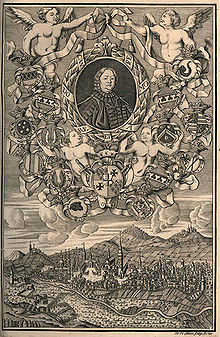| This article needs additional citations for verification. Please help improve this article by adding citations to reliable sources. Unsourced material may be challenged and removed. Find sources: "Exemption" Catholic canon law – news · newspapers · books · scholar · JSTOR (August 2024) (Learn how and when to remove this message) |
In the Catholic Church, an exemption is the full or partial release of an ecclesiastical person, corporation, or institution from the authority of the ecclesiastical superior next higher in rank. For example, the Roman Catholic Archdiocese of Strasbourg, and the Latin Patriarchate of Jerusalem are exempt, being directly subject to the Holy See.
See List of Catholic dioceses (structured view) for a list of exempt entities.
Background

Originally, according to canon law, all the residents of a diocese, as well as all diocesan institutions, were under the authority of the local bishop. Following complaints by monasteries that bishops treated them oppressively, they were taken under the protection of synods, princes and popes. Papal protection often evolved later into exemption from episcopal authority. From the 11th century onward, papal activity in the matter of Church reform has often been the source of exemptions.
Extent and scope of exemption

Eventually, not only individual monasteries, but also entire orders, were granted exemption from the authority of the local bishop. Exemptions were also granted to cathedral chapters, collegiate chapters, parishes, communities, ecclesiastical institutions, and even single individuals. In some cases, monasteries and churches which could document that from time immemorial they had never been subjected to the authority of a bishop could have their claim to exemption confirmed. Under these circumstances, the diocesan administration of the bishops was frequently crippled. Complaints and conflicts were frequent and councils were called upon to clarify and circumscribe the notion and scope of exemption.
Some bishops gained exemption from the authority of their metropolitan (archbishop), either at their own request or by decision of the Holy See. However, those exempt bishops were required to choose an ecclesiastical province and attend the provincial synods.
In the case of monasteries and churches, exemption is known as either passiva or activa, the latter being the most extensive. Abbots known canonically as proelati nullius cum territorio separato exercised quasi episcopal rights over a clearly defined territory entirely distinct from the diocese. There was disagreement as to whether or not such exempt abbots could be required to attend provincial synods as their presence might eventually jeopardize the right of exemption of their monasteries.
The exemption enjoyed by female orders and religious houses was more restricted. The bishop or his representative presided over the election of the abbesses, prioresses, or superiors and they continued to have the right to visit canonically these houses. They also retained the right to supervise the observance of the clausura (cloister).
See also
References
- ^ "Exemption". Catholic Encyclopedia. Retrieved 2007-02-18.
- D. Bouix, Tractatus de concilio provinciali, Paris, 1862, p. 128.
- D. Bouix, Tractatus de concilio provinciali, Paris, 1862, p. 144.
Further reading
- Corada-Alonso, Alberto (2021). "The Abolition of the Exempted Jurisdictions of the Collegiate Churches in the Liberal Period" (PDF). International Journal of Innovation, Creativity and Change. 15 (10): 1064–1079.
